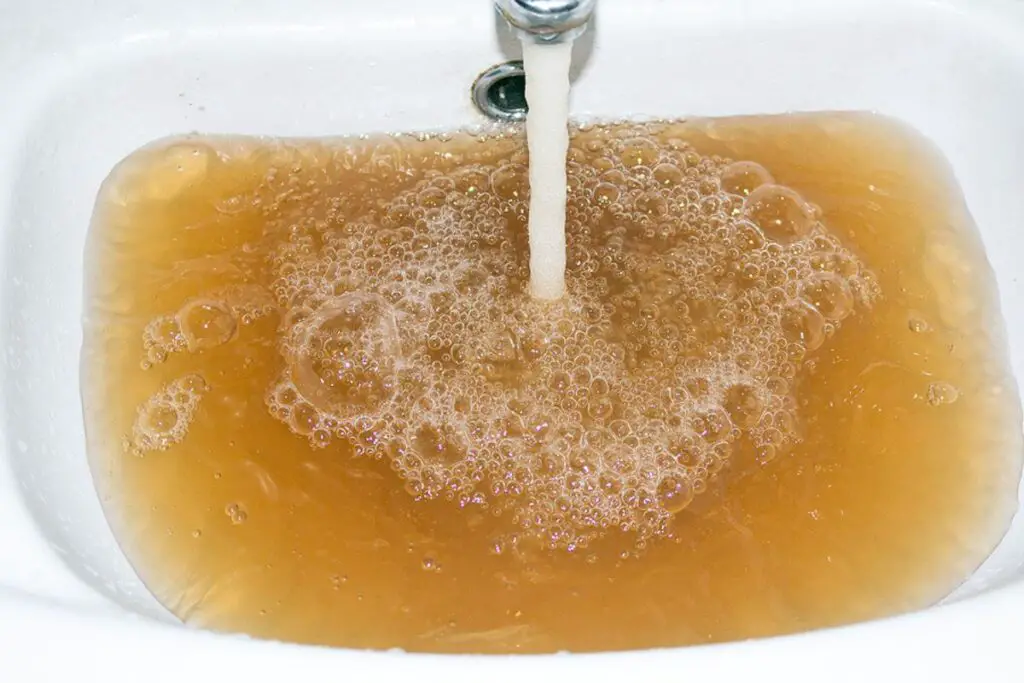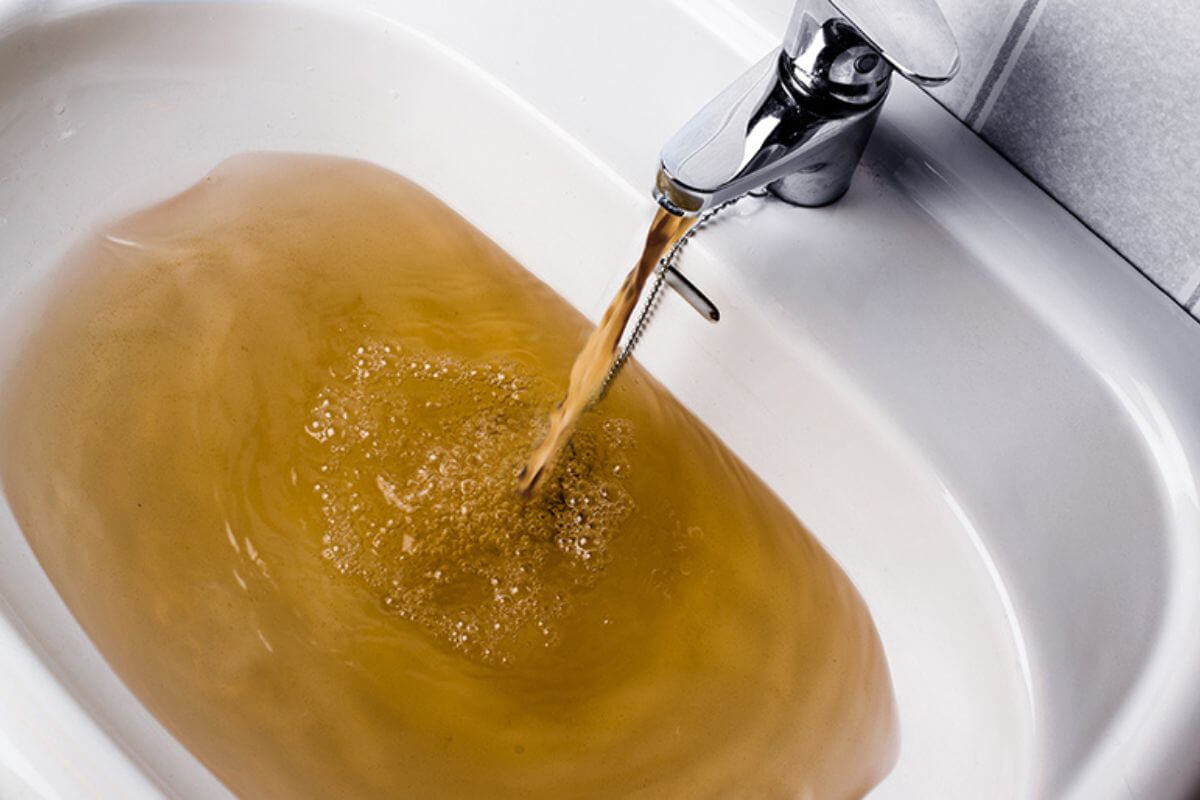Water is essential for our daily routines, and among the many uses, bathing is a crucial one. However, what happens when you turn on the tap, and the water that flows is discolored, appearing brown or rusty? Is it safe to bathe in brown water, or should you be concerned about its impact on your skin and overall health? This comprehensive guide explores the causes of brown water, its potential risks, and steps to ensure a safe bathing experience.
Understanding the Causes of Brown Water
Brown water, which often appears unexpectedly from faucets, can be a disconcerting sight. Understanding the potential causes of brown water is crucial to addressing the issue effectively. While the discoloration is not typically a health hazard, it can be a source of inconvenience and may indicate underlying problems in the water supply system. Here are some common causes of brown water:
1. Sediment and Minerals in Water Sources
One of the primary reasons for brown water is the presence of natural sediments and minerals in water sources. As water travels through the ground, it can pick up particles such as iron, manganese, and calcium. These minerals can cause the water to appear brown or rusty when they are suspended in it. This type of brown water is usually safe for bathing but may not be visually appealing.
2. Rusty or Corroded Pipes
Old or corroded pipes within your home’s plumbing system can be a significant contributor to brown water. Over time, the interior of metal pipes can deteriorate, leading to rust or sediment buildup. When water passes through these corroded pipes, it can pick up these particles and carry them to your faucets, resulting in discolored water.
3. Municipal Water System Disturbances
Temporary disturbances in the municipal water supply system can lead to brown water. Construction, maintenance, or repairs in the water distribution network can stir up sediments and rust that have settled at the bottom of pipes and tanks. When these particles are disturbed, they can flow through the water lines, affecting the water’s color.
4. Seasonal Changes
Seasonal changes, such as heavy rainfall or spring runoff, can also contribute to brown water. Increased water flow and turbulence in rivers or reservoirs can dislodge sediment, which can then enter the water treatment and distribution system.
5. Water Treatment Processes
Water treatment facilities typically use chemicals like iron or aluminum salts to remove impurities from the water. In some cases, if these treatment chemicals are not correctly controlled or if the water supply experiences a sudden change in quality, it can result in discolored water.
6. Presence of Bacteria
While less common, the presence of certain bacteria can cause water discoloration. Iron bacteria, for example, can produce a brown or reddish-brown slime when they interact with iron in the water.
Understanding these common causes of brown water is the first step in addressing the issue. If you experience brown water, it’s essential to take appropriate precautions, such as running the taps to clear the water and, if necessary, contacting your local water utility provider to investigate and resolve the problem. While brown water is usually safe for bathing, it’s crucial to address any persistent issues to ensure the safety and quality of your water supply.
Is It Safe to Bathe in Brown Water?
While brown water can be concerning, especially when it appears unexpectedly, it’s generally safe for bathing. Bathing in brown water is unlikely to cause harm to your skin or overall health. The discolored water is primarily an aesthetic issue rather than a health hazard.
However, it’s important to note that bathing in brown water may not be a pleasant experience. It can leave stains on your skin, clothing, and bathroom fixtures. Additionally, the water may have an unpleasant odor or taste.

Precautions and Considerations
If you find yourself faced with brown water and still wish to bathe, consider these precautions:
Use a Filter:
A water filter or purifier can help remove sediment and particles from the water, providing a cleaner bathing experience.
Check for Announcements:
Check with your local water utility provider for any official announcements regarding brown water. They may provide information on the cause and expected duration.
Avoid Ingestion:
While bathing in brown water is generally safe, it’s best to avoid drinking it or getting it in your eyes, mouth, or open wounds.
Flush the System:
If you encounter brown water, you can help clear the issue by running your faucets for a few minutes until the water runs clear. This can help flush out any trapped sediment in your home’s plumbing.
Contact Your Water Provider
If brown water is a recurring issue in your area or if it persists for an extended period, it’s advisable to contact your local water utility provider. They can investigate the cause and take measures to address the problem, ensuring that the water supply is safe and aesthetically pleasing for all users.
In Conclusion
While brown water can be alarming, especially when you want to take a refreshing bath, it’s typically safe for bathing. The discoloration is usually caused by harmless particles such as rust or sediment. However, if you have concerns or the issue persists, it’s essential to reach out to your local water provider for guidance and assistance in resolving the problem. Ultimately, you can still enjoy your daily baths with the right precautions and information at hand.
Taking Additional Precautions
When dealing with brown water, especially for bathing purposes, it’s essential to take some additional precautions to ensure a safe and comfortable experience:
1. Skin Protection:
If you have concerns about staining your skin or hair due to brown water, consider applying a barrier, such as a thin layer of coconut oil or petroleum jelly, before bathing. This can help minimize direct contact between your skin and the discolored water.
2. Bathing Products:
Choose bathing products like soap and shampoo that are colorless or less likely to react with the water’s impurities. Fragrance-free and hypoallergenic products can be a good choice during such times.
3. Temporary Water Use:
While brown water may not pose health risks for bathing, it’s still wise to minimize the use of discolored water for cooking or drinking. Use bottled or purified water for these purposes until the issue is resolved.
4. Maintenance Checks:
Regularly inspect your home’s plumbing for signs of rust or corrosion. If you suspect that your household plumbing is contributing to the brown water, consider professional inspections and necessary repairs.
5. Reporting and Documentation:
Keep records of instances of brown water, including dates, times, and any noticeable changes in water quality. This documentation can be valuable when communicating with your local water utility provider.
Contacting Your Water Utility Provider
If brown water is a recurring issue in your area or persists for an extended period, it’s essential to reach out to your local water utility provider. They are responsible for ensuring the safety and quality of the water supply. When contacting them, consider the following:
- Be prepared to provide details about the issue, such as when you first noticed the brown water, its duration, and any changes in water quality.
- Inquire about any ongoing maintenance, construction, or repair work in your area that may have contributed to the problem.
- Request information about the steps being taken to resolve the issue and the estimated timeline for restoration of clear, clean water.
By maintaining open communication with your water utility provider, you can contribute to a quicker resolution of the brown water problem and help ensure the safety and quality of the water supply for your community.
In Conclusion
While brown water can be an unsettling sight, it’s generally safe for bathing with some basic precautions. The discoloration is usually due to harmless particles like rust or sediment. By taking steps to protect your skin, using appropriate products, and reporting issues to your water utility provider, you can navigate the situation with confidence. Remember that addressing brown water is a collective effort, and your involvement can contribute to a faster and more effective resolution.
Certainly! Here are five Frequently Asked Questions (FAQs) related to brown water and its safety for bathing:
FAQS
1. Is it safe to bathe in brown water?
Yes, in most cases, it is safe to bathe in brown water. The discoloration is typically caused by harmless particles like rust or sediment. While it may not be aesthetically pleasing, it is generally not a health hazard for bathing.
2. Can brown water stain my skin or hair?
Brown water can potentially stain your skin or hair, especially if it contains rust particles. To minimize staining, consider applying a barrier like coconut oil or petroleum jelly before bathing.
3. What should I do if I encounter brown water at home?
If you encounter brown water at home, you can run your faucets for a few minutes to help flush out any trapped sediment in your plumbing. If the issue persists or you have concerns, contact your local water utility provider.
4. Can I use brown water for drinking and cooking?
It’s best to avoid using brown water for drinking and cooking, even if it’s generally safe for bathing. Use bottled or purified water for these purposes until the issue is resolved.
5. How can I protect my plumbing from contributing to brown water?
Regularly inspect your home’s plumbing for signs of rust or corrosion. If you suspect that your plumbing is contributing to the brown water issue, consider professional inspections and necessary repairs.
These FAQs offer insights into the safety of bathing in brown water, steps to minimize staining, and guidance on addressing the issue and protecting your home’s plumbing.



